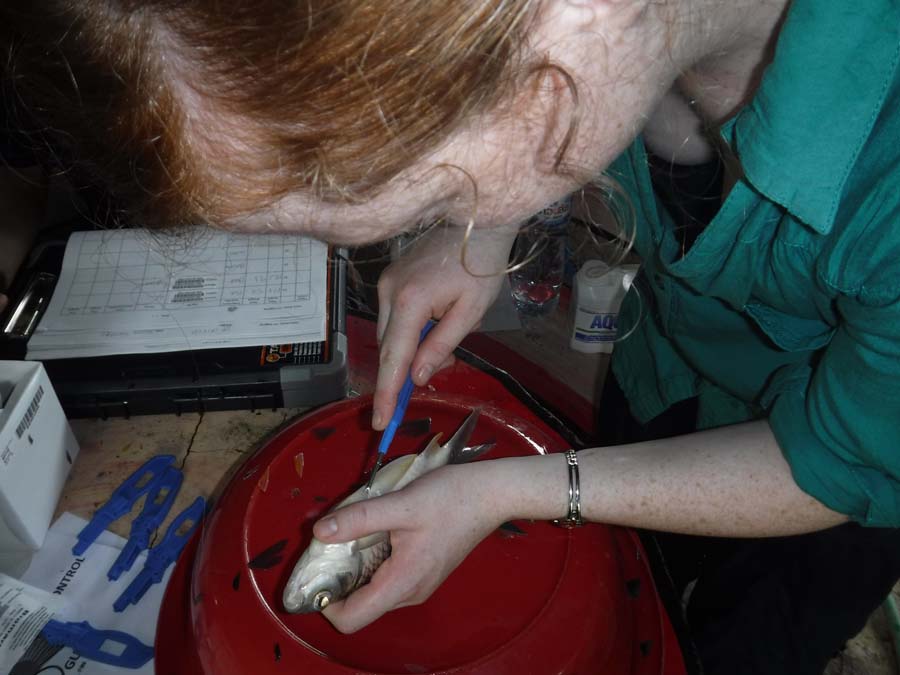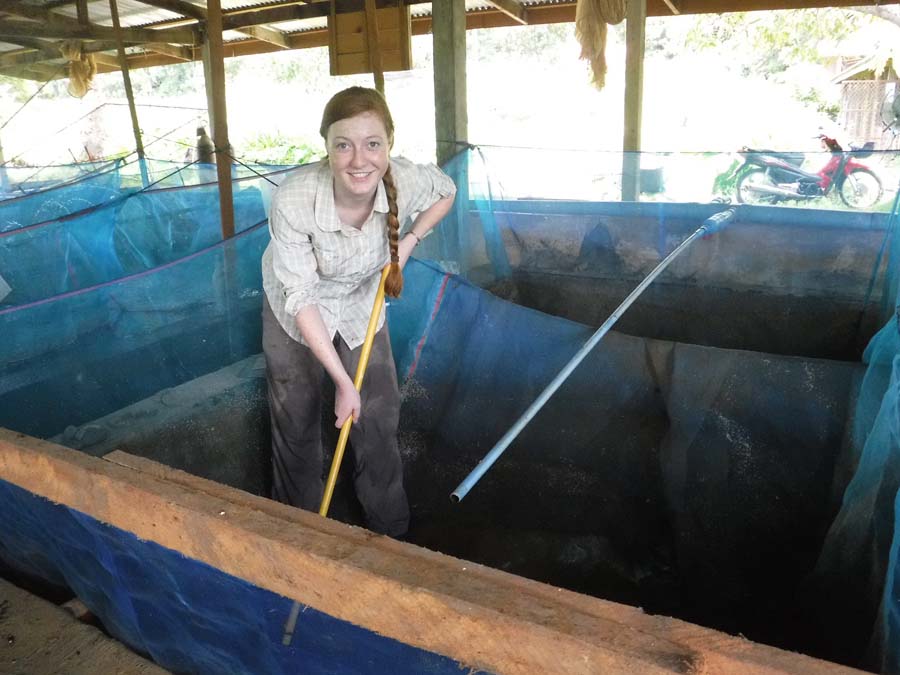Tagging fish in Laos
I am more than half way through my Honours research project on “Retention of Passive integrated transponder (PIT) tags in selected Mekong River fish”. There are currently plans to use PIT tagging to understand fish movements across the Lower Mekong Basin in South East Asia. To date, no studies have been performed on any of the 1,200 species that reside here to validate whether the critical requirements for tagging studies are valid for PIT tags. My study aims to explore this gap by trialing PIT tagging technology as a first step in investigating whether it could be a useful tool to evaluate fish movements in the Lower Mekong Basin.

Figure 1. Bettina tagging fish
With the help of an excellent team, 120 Goldfin tinfoil barb fish (Hypsibarbus malcolmiand) and 120 Striped catfish (Pangasianodon hypophthalmus) were weighed, measured and tagged. PIT tagging fish can be likened to microchipping pet dogs and cats, each having their own unique identification number. Fish were tagged in three locations on their body; chest, gut and shoulder, to determine which location has the highest retention rate of PIT tags over a 50-day period.
I am in the second month of the experimental phase of my project and am thoroughly enjoying monitoring my fish.
What is a typical day like for a 22-year-old studying fish tag retention in Laos?
Equipped with a giant stick and rocks in my pockets as a deterrent, I run the gauntlet of dogs that regarded the ponds as their territory prior to my arrival (I think they are getting used to me visiting their range now). When I arrive at my experimental ponds, I conduct water quality tests, clean flow-through poles and change 25 per cent of the water to ensure the best possible conditions for the fish. Fish husbandry is not very glamourous and after a long mornings work I know people do not envy me!

Figure 2. Bettina cleaning out fish ponds
Using a large magnet expertly attached to a yellow pole with wire, I begin to drag the magnet slowly along the bottom nets of the ponds, searching for tags that may have been rejected by the fish. I have learnt that the Goldfin tinfoil barb fish are remarkable jumpers and if I am lucky enough, I get a slap to the face if I drag my magnet too close to an unsuspecting fish. The Striped catfish on the other hand, just seem very offended when I disturb their hiding places along the bottom of the pond nets with my magnet. If I find a tag, I use a PIT reader that identifies the unique number of that specific tag, where I can log and find out exactly what fish has shed the tag and from what location on the fish’s body. So far, the Goldfin tinfoil barb fish have had the highest tag rejections from the chest and shoulder, whereas the Striped catfish it has had the highest tag rejections from the chest only.
Covered in sunscreen, insect repellent, pond water, with soaking shoes I catch the public tuk tuk back (like a local bus). With my giant back pack, broad brimmed hat, pale skin, red hair and water drenched appearance I get a lot of attention. Someone normally plucks up a conversation with me whether it is in Laos or English, ensuring that I am not ripped off when I pay the driver and that I don’t miss my stop… although my pronunciation seems to be terrible so if I am taken to the wrong place it is normally my own doing.
Every day is quite the adventure.

Figure 3. Public transport


